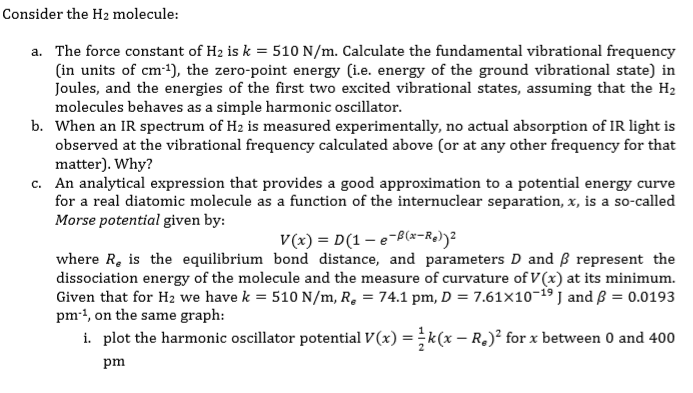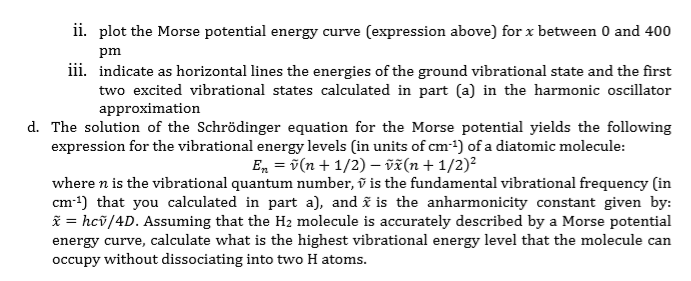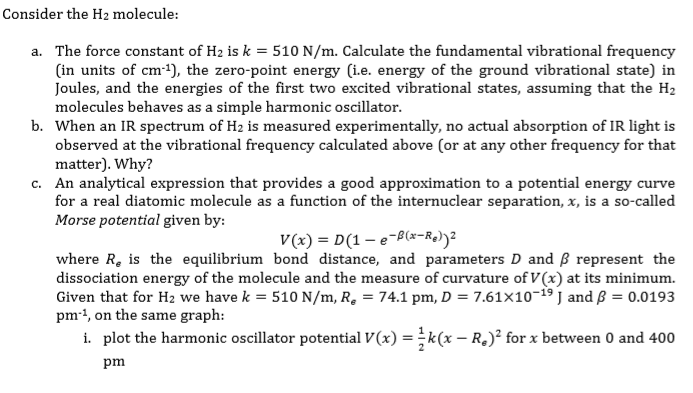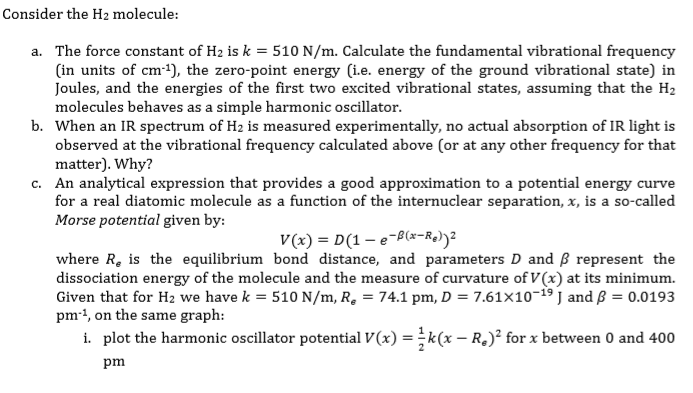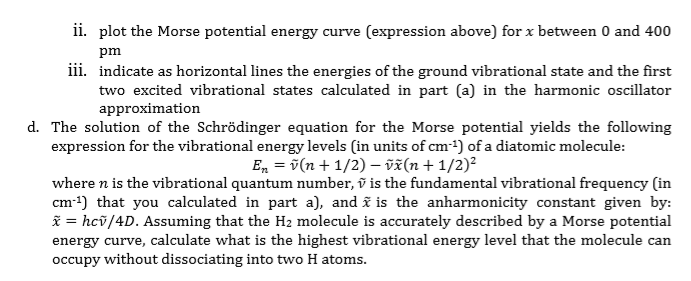CHEM 20A Chapter Notes - Chapter 6: Bond-Dissociation Energy, Effective Potential, Bond Length
Document Summary
It is required by the indeterminacy principle and is called the zero-point energy. Next we move the nuclei a bit, and repeat the calculation for the electrons at the new fixed location for the nuclei. , as the effective potential energy for the motion of the nuclei. The lowest energy solution for eel at each fixed internuclear position gives the v(r), the effective potential energy as a function of internuclear distance for h2 molecule. That gives us the bond dissociation energy and the equilibrium bond length. Using this potential energy function and the kinetic energy for the relative motion of the nuclei (that we left out previously), we construct and solve a. 6. 2. 1 electronic wave functions: each wave function is identified by four labels. By analogy with the quantum number subscripts on the atomic orbitals (1) first, the integer is an index that tracks the relative energies of the wave functions of each symmetry t(cid:455)pe.


